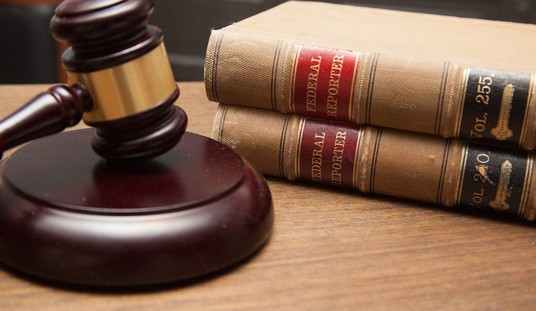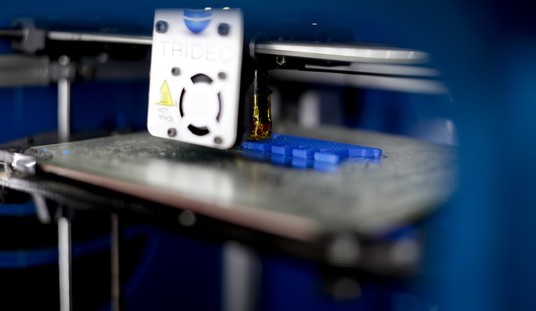Amonderez Green’s family called Normandy, Missouri police because the 18-year-old was suicidal and the family could not reason with him.
What happened after officers arrived is in dispute.
The version of events offered up by police is tragic, but relatively simple and straightforward.
…officers tried repeatedly to communicate with Green in the presence of his family members. Green continued to walk for some time, eventually removing a silver revolver from his waistband and starting to fire at the officers. One of the officers deployed a Taser on Green, and after that proved ineffective, the same officer fired his gun three times. The department said Green fired another shot while fleeing and that the officers briefly lost sight of him. Soon after, they heard one final shot.
The officers then found Green on the ground, “suffering from what appeared to be a self inflicted gunshot wound located under the chin,” according to the St. Louis County police statement.
Green was pronounced dead at 4:29 AM on Thursday, the department said. The statement added that “an autopsy is pending” but that an examination at the emergency room showed that Green’s “only wound was the self inflicted one.”
Hospital emergency room staff stated that Mr. Green was struck by one bullet, fired from underneath his chin, fired at contact distance.
The revolver, a six-shot .38 Special, was determined to belong to someone close to Mr. Green’s family.
Four expended shell casings inside the cylinder and two unfired cartridges.
Three bullets struck homes behind the officers fired by Mr. Green. One of the recovered bullets that struck one of the homes was in good enough condition that it was quickly matched to the gun.
The fourth bullet was presumably the one that ended Mr. Green’s life, but several eyewitnesses—including the obligatory witness who prefers to remain anonymous—claimed that the shooting was nothing more or less than a police execution.
The woman said she was looking out her window when she saw Green — who was wearing a red, orange and yellow jacket — turn to face the officers, who were just six or seven feet away from him. One of them then shot him in the face, she said.
“We heard approximately six gunshots ring out. I yelled and told my daughter to get down,” she said.
“He was right at eye level as [the officer] shot him,” the woman continued. “It was not a suicide. At all.”
Another “witness” named Dominique Clemons makes a very similar claim.
Dominique Clemons, who says she witnessed the incident from about three houses up the street, also told HuffPost that the police shot the teenager.
“While he was running, he turned around to face the police and that’s when he got shot in the face,” she said Wednesday. “I saw his body drop. They shot him in the face, his whole right side of his face was gone, his top lip was gone.”
There is a huge discrepancy between what the witnesses claim and what the authorities claim occurred.
Fortunately, their competing claims are easily proven or disproven by ballistic science, including the angle and distance of the shot, bullet diameter, bullet design, metallurgy, shape, weight, rifling marks on the bullet left by the barrel, and in this instance, powder burns.
The smokeless powder used in law enforcement and civilian self-defense ammunition is formulated to burn very fast and completely (or almost completely) inside the barrel of an average handgun to avoid a blinding muzzle flash when fired in low-light conditions.
If the police officer shot Mr. Green from the distance of two yards away (long distance, in forensic terms) with his semi-automatic pistol as the witnesses claim, there will be no powder burns or stippling (freckling”) around the wound.
If Green shot himself with the barrel of the revolver pressed up under his chin as a contact shot as authorities claim, there will be an entirely different set of wounds, due to both the distance of the shot (zero inches) and the type of gun he was carrying.
If Green shot himself, the powder burns of gas and unburned powder will be evident at the point of contact and inside the wound itself, and in great concentrations. The difference in the powder burns in a contact shot and one fired from several yards away is obvious and self-evident.
[If you are interested in the science of gun shot wounds, this forensic medicine slide show shows both contact (slide 13) and the long range (2 meter/6-7 feet, slide 21) injuries. Theses are photos of real injuries, and are not for the squeamish ]
In addition to the powder expelled from the muzzle common to all firearms, revolvers have the unique trait of throwing jets of burning gases and unburned powder out at 90-degree angles as the bullet jumps the cylinder gap between the revolver’s cylinder and the barrel.


Cylinder gap jets like those shown in the photo above only come from revolvers like the weapon Green is accused of carrying, firing at police, and allegedly himself.
If Green did put the revolver under his chin and pull the trigger, odds are high that he will not only have a distinctive contact wound, but also distinctive revolver-only powder burns on this neck. Depending on the exact angle, the jetting gasses themselves can cause horrific wounds, and there are many horrific photos on the Internet of revolver shooters blowing off parts of their support hands (most typically a thumb) from poor hand positioning.
Green’s family need only ask for a photo of the wound to be released if they want the truth to be known.








Join the conversation as a VIP Member